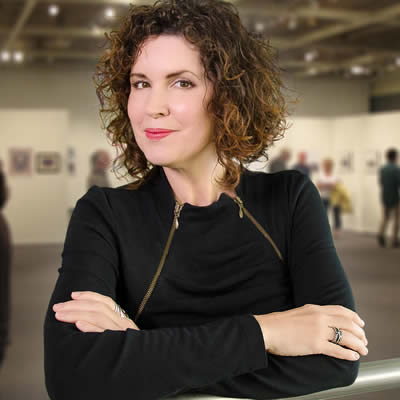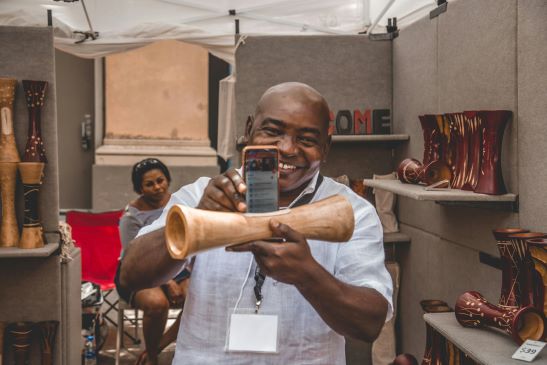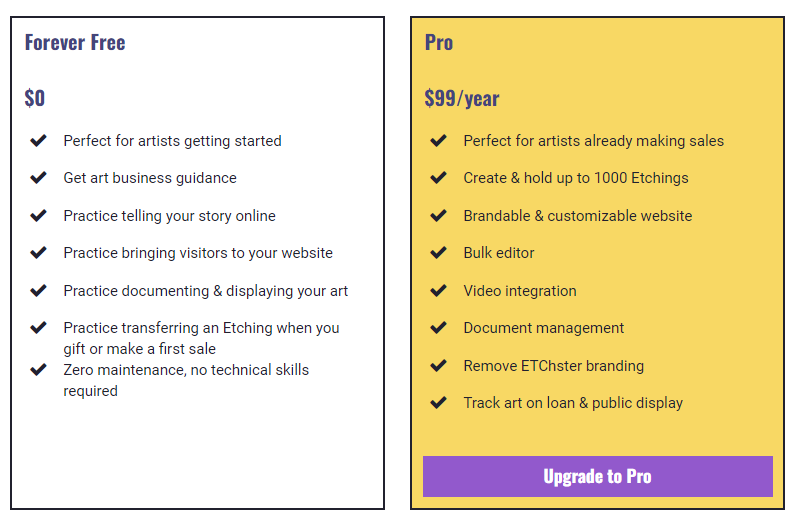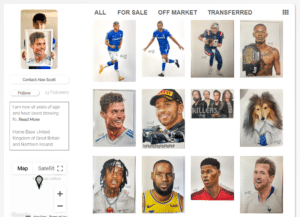The 5th in our art business series with artist and art business expert, Crista Cloutier, who has been coaching other artists around the world on all aspects of their business via her program: The Working Artist.

Artists who have a solid audience base most often see consistent sales and growth and new opportunities.
But building a target audience is not easy! It’s an investment of time and energy to gather and nurture a large customer base. And artists have to go deeper than other entrepreneurs, creating emotional and aesthetic connections with their followers and not just letting the products sell themselves.

Often, when I ask artists about their target audience, they say “everybody” or “rich people.” These are not the correct answers. You need to go deeper, much deeper.
The first step to take before you can build an audience is to look at yourself and your work. What’s your area of expertise or style? What’s your art about? Why do you make art? By finding what I call the “golden thread” of your work, you can identify the right people for your work much more easily and make true connections with them.
Here are five secrets to help you build an audience for your art business:
1. Make Use of Social Media
You can maximize the use of social media platforms like Instagram, YouTube, Facebook, and Pinterest to build your audience. Not only do you get your work in front of people when you post consistently, but these platforms allow you to create a direct connection by answering their questions and comments. You can also invite them to art fairs and exhibitions when you show your work.
Facebook allows you to engage customers through posts, photos, videos, and live chats. It’s the biggest social media platform, so it has helped many artists to build massive followings of loyal art enthusiasts.
But it’s not a matter of “post it and they will come.” It’s important that you take the time to respond to comments or even have direct chats with your clients through private messaging. You build relationships by making people feel appreciated.
Facebook, Instagram, and Pinterest allow you to share photos and brief video clips. A lot of artists prefer to use these platforms to engage with their audience. Here, you might also attract the attention of curators, interior designers, or gallery owners.
On Instagram, a powerful way to help your work reach the right audience and extend that reach to new people is the use of proper hashtags. We won’t go deep into hashtags here, but the key is to use hashtags that reflect your brand, your ethos, and your work. Don’t just use the same hashtags everyone else is using, be creative and have fun with your hashtags too.
Sometimes artists tell me that they have multiple accounts on one platform. Maybe they want to keep their personal and professional lives separate? Maybe they want to have a different identity for their different styles of work? I always advise against this practice. It’s too much work for you and it’s definitely confusing to your prospective audience. Simplify!
And speaking of simplification, you don’t have to do all of this yourself. Some artists are able to engage a social media manager. Life is even more simple if you can delegate your social media platforms to an expert that will handle all the posts and respond to inquiries. If you do have the ability to hire a social media manager, it’s important that they have in-depth knowledge about your business and your brand to provide relevant information to your followers and reflect your work consistently.
2. Use Customer Content
Research shows that 92% of people prefer word-of-mouth advertisements to any other form. They are more likely to believe what other customers say than anything you say.
Therefore, using user-generated content is the best way to encourage your target audience to buy or check out your work. These are the posts about your work that a customer herself posts. Maybe she’s taken a picture of your sculpture in her garden with a few words about how happy it makes her? Re-post that!
Note: ETChster artist websites have a built-in reviews module where your fans can comment and you can show how highly they appreciate your work.
You can share the content on all of your social media platforms for other people to see. This is powerful stuff. In fact, you might even want to encourage your clients to write testimonials and share them on social media.
One artist I know organized a contest, challenging his clients to post something about his work in their collection. He offered the prize of a new smaller piece to the winner. And he set conditions for winning the prize. In this case, the winner was the post with the most likes. This method increased his popularity, attracted new followers, and even won him some new paying clients.
3. Build a Community
While I do promote the use of social media to build your audience, nothing is more powerful than your email list. That’s where the real gold is. Why? Because you own those names. On social media, you don’t. Email also gives you the opportunity to connect directly with your followers. Even when emailing on personal topics, your artist email signature is a great place to link to your website and remind people about your art business.
Note: ETChster websites give you the email addresses of those that use your contact form, unlike social media platforms.
You can collect email addresses when you are living your real life off-line, but your website can also do a lot of the work for you with an “opt-in form.” Some artists use giveaways or discounts or other “ethical bribes” to get someone’s email address on their website. These are time-proven techniques, if you’re offering something that your audience finds truly useful.
Once you have a list of emails, you can start sending out newsletters to connect and engage with your audience. You can show them new work. You can share a behind-the-scenes glimpse into your art practice. You can also inform everyone of upcoming art fairs for artists, exhibitions, and open studio events.
4. Live Shows and Demos
Many artists build their audience by hosting live shows on YouTube and Facebook for your clients from time to time. During these shows, you can hold an online exhibition, showcase just one piece, or take them through creating an art piece.
You can also talk about your work, what inspires you, or have a live question-and-answer session.
While not everyone is comfortable on camera, live videos allow a more intimate connection with your audience. It makes them feel closer to you. They feel like they know you better, so they feel more attached to your work.
Be sure to let people know in advance through social media platforms and email when you will air live.
Another great way of marketing your art is through creating short video demos. In the clips, you show your audience your art techniques and bits of your latest work. You can use apps like MoShow Slideshow Photo and Video or PicFlow to create these demos.
Then post these video clips on your social media pages, such as Facebook and Instagram, or your website. You can also include the images in your newsletters. Alternatively, you can choose to create images that show the process step-by-step.
This method keeps people coming back to your site to see more of your work.
5. Tutor Your Audience
I always say that the most powerful way to engage your audience is to teach them to view your work. That’s the best way to use social media and your newsletter too.
It goes back to the “golden thread” again. What’s your work about? Who were your influences? Are you using a technique that’s not often seen? Share that!
By teaching people about the inspiration and execution of your work, by sharing your life as an artist, you will be teaching people how to view your work when you do post it. The idea isn’t to sell sell sell all of the time. The idea is to educate so that when you do sell you art to art collectors, people will have already been primed to buy.
6. Parting Shot
The social media platforms are full of artists. Too many of them are just making noise, posting pictures of their work, and hoping someone will buy.
But you can stand out in the crowd by using engaging and unique ideas to market your art pieces. Learn who your audience is and build personal relationships with them. It’s never a bad idea to send handwritten appreciation notes and treat them to free tickets to exclusive shows.
Don’t be discouraged! It takes energy, time, and patience to build an audience for your work. But you can build a large following of raving fans.

Guest Author: Crista Cloutier
Crista Cloutier has been actively involved in the contemporary art world throughout her career. Having worked as an international art dealer, curator, and gallerist, Crista is now the founder of The Working Artist, an online business school for visual artists.
Honored as an “Influencer in the Contemporary Art World” by LinkedIn, Crista’s work has helped artists in over 80 different countries to exhibit and sell more art.
What’s Next?
Did you:
- Have follow-up questions?
- Have other related thoughts that might be beneficial to the community?
Post them in the comments!
Are You a Visual Artist?
Get the art catalog app and connected, maintenance-free website your art business deserves. Forever Free & Pro versions.
Are You an Art Collector?
You’ll have access to a marketplace of global artists and phenomenal tools to organize your art collection. Forever Free & Pro versions.
You Might Also Enjoy…

The Art of Asking: Navigating Cold Outreach for Artists

Crafting Your Story: The Artist’s Guide to Unlocking Creativity and Connection

Unlocking Sales: The Magic Formula for Content and Traffic for Artists’ Online Portfolios



